Learn how to change the startup disk on your Mac on the fly or permanently if you’d like to boot from other storage devices like an external drive.
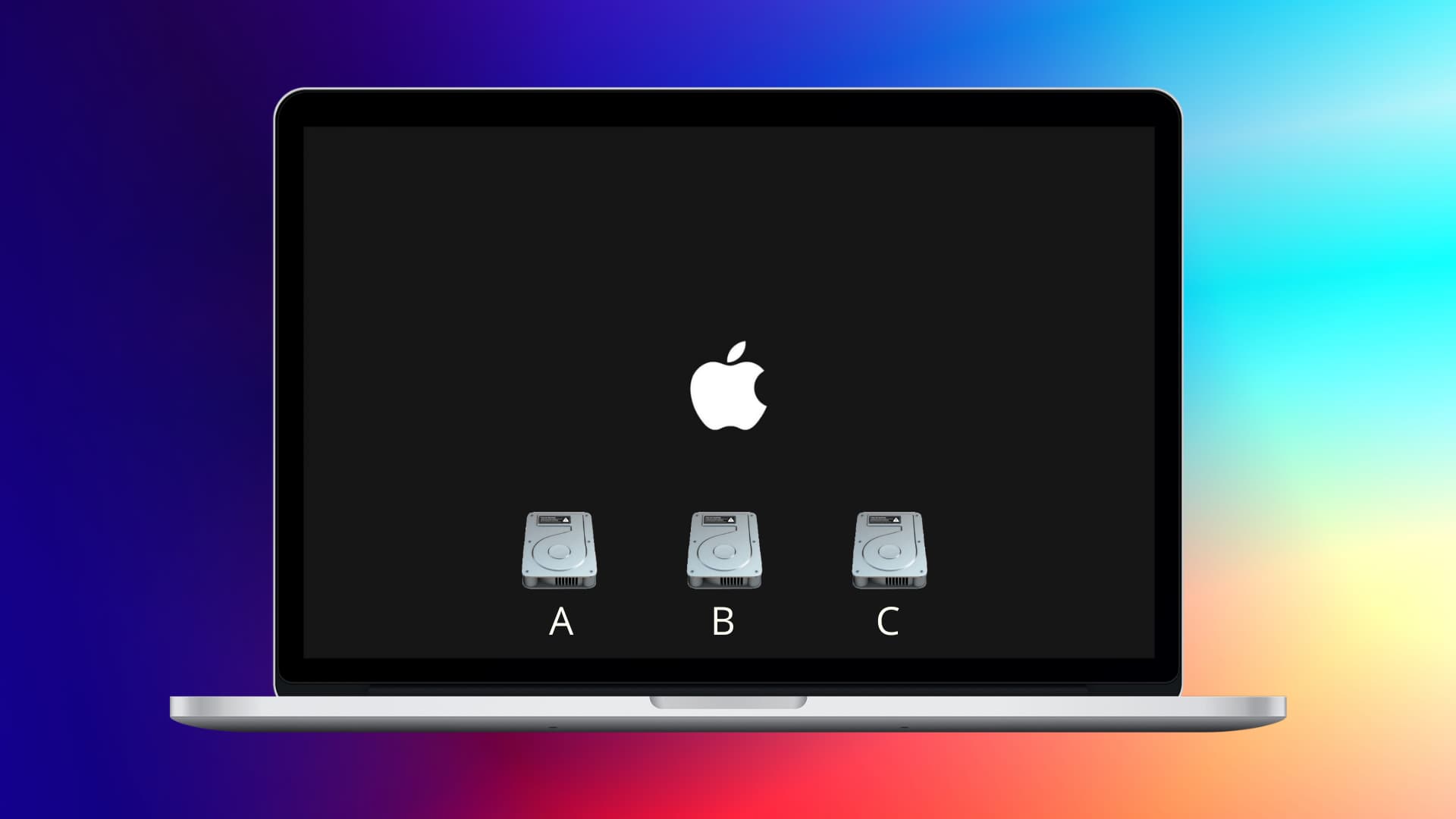
The startup disk is built-in storage that holds a copy of the macOS operating system your computer loads at boot time. If you want to run multiple operating systems, you may need to switch the startup drive. For example, in my multi-boot setup, the macOS Tahoe beta is installed on a separate partition so I can try out the new features coming this fall without affecting my current environment.
You may prefer to create a bootable macOS installer on a USB thumb drive to have something to boot your Mac from in case the startup drive suffers a catastrophic failure.
You can set a startup disk in System Settings or change it for the current session at boot time. Watch our video and read the step-by-step instructions below showing you both methods, with separate instructions for Intel-based Macs and Apple silicon models.
Apple silicon Macs
First, click the Apple menu and choose Shut Down. When your Mac turns off, hold the power button until you see Loading startup options. If you have a Mac mini, wait until the system indicator light turns amber. macOS will scan all drives connected to your Mac and display bootable volumes. Select one using the arrow keys, then click Continue below it. The computer will start up using the selected disk, but will revert to the default startup disk on next restart.
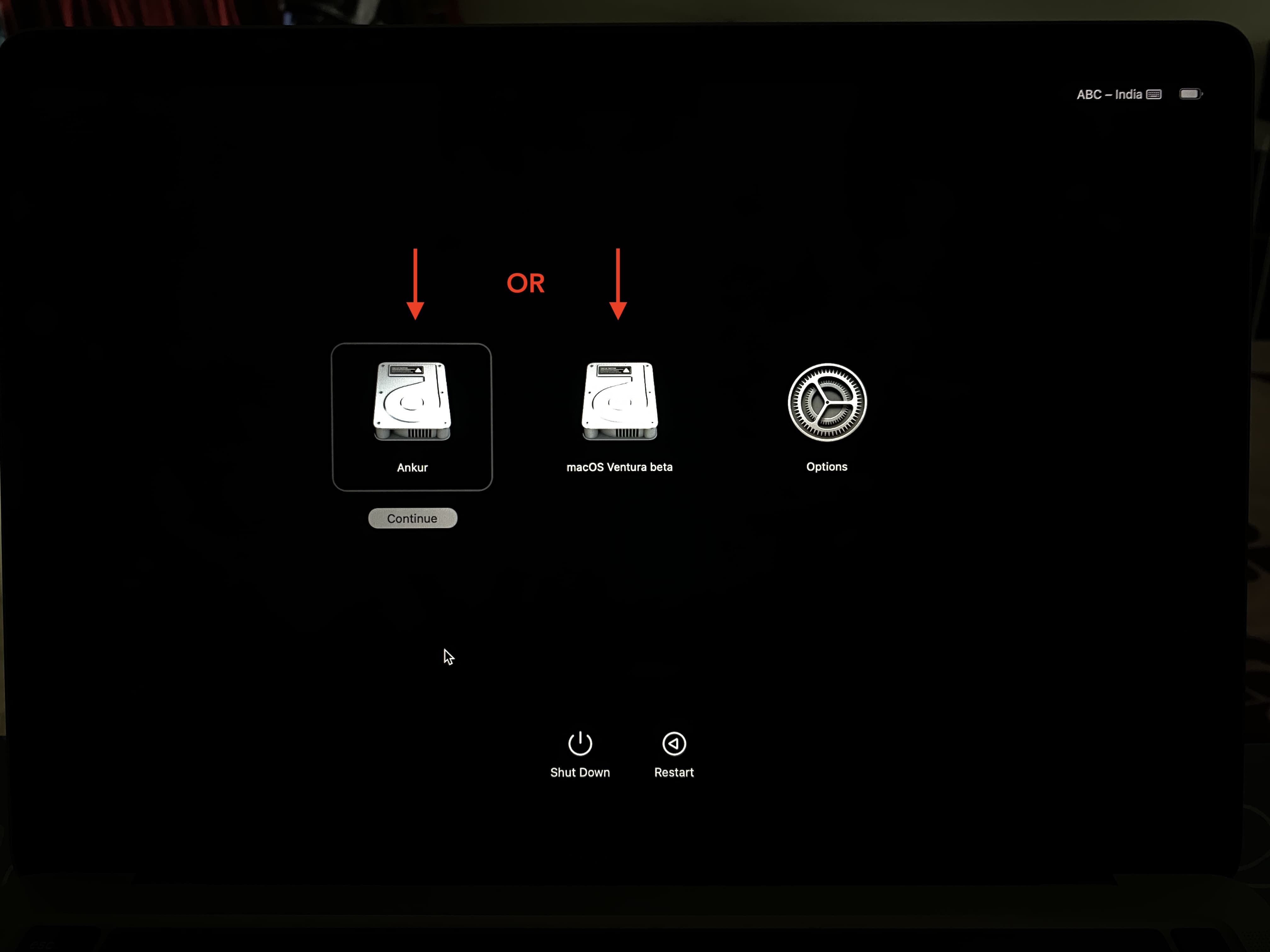
Intel-based Macs
Click the Apple menu and choose Restart or power up your Mac if it’s already turned off. As soon as the startup chime plays, hold the Option (⌥) key and don’t let go until Startup Manager shows up. You’ll see available startup disks highlight a bootable volume with the arrow keys (or click with your mouse or trackpad) and press the Return key (or double-click) to boot your Mac from the selected volume. If you attach a drive while Startup Manager is active, it will show up in the list provided there’s a bootable copy of an operating system.
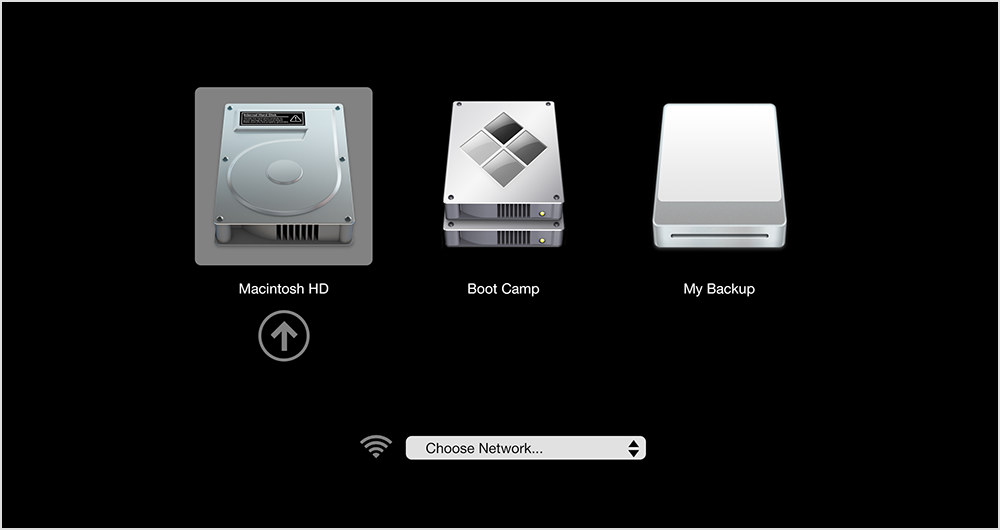
Change the default startup disk
You can use System Settings (macOS Ventura or later) or System Preferences (macOS Monterey and older) to set a default startup disk for future reboots.
System Settings
In System Settings > General > Startup Disk, select a volume from the list. If this is an encrypted volume, click Unlock and enter your admin password. Click the Restart button to reboot the machine from your newly designated startup disk. This will be your new default startup disk for future reboots.
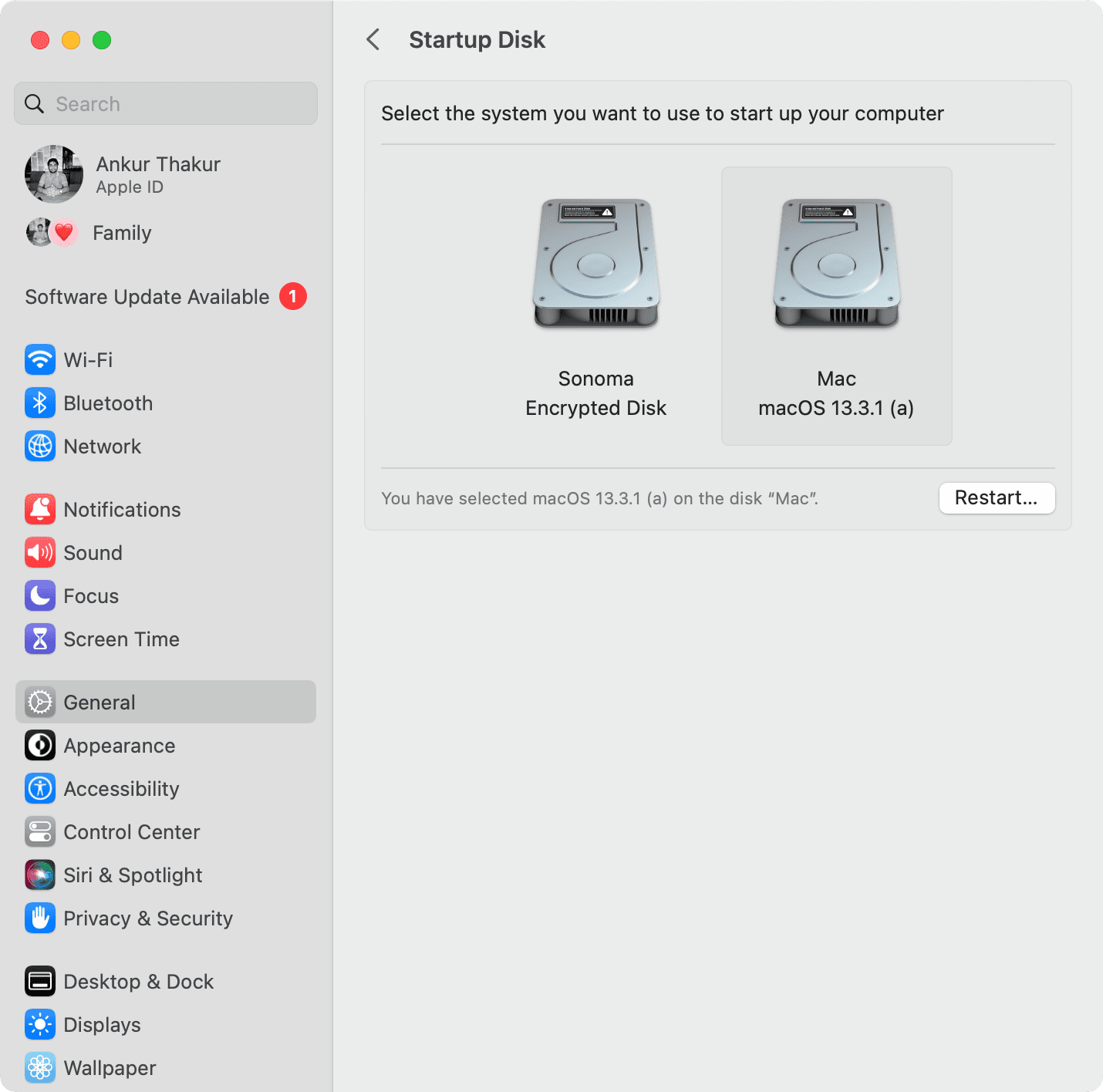
System Preferences
Go to System Preferences > Startup Disk, and click the padlock in the bottom-left corner to unlock this preference pane. Select a new default startup disk from the list (unlock it if encrypted), and then click Restart.
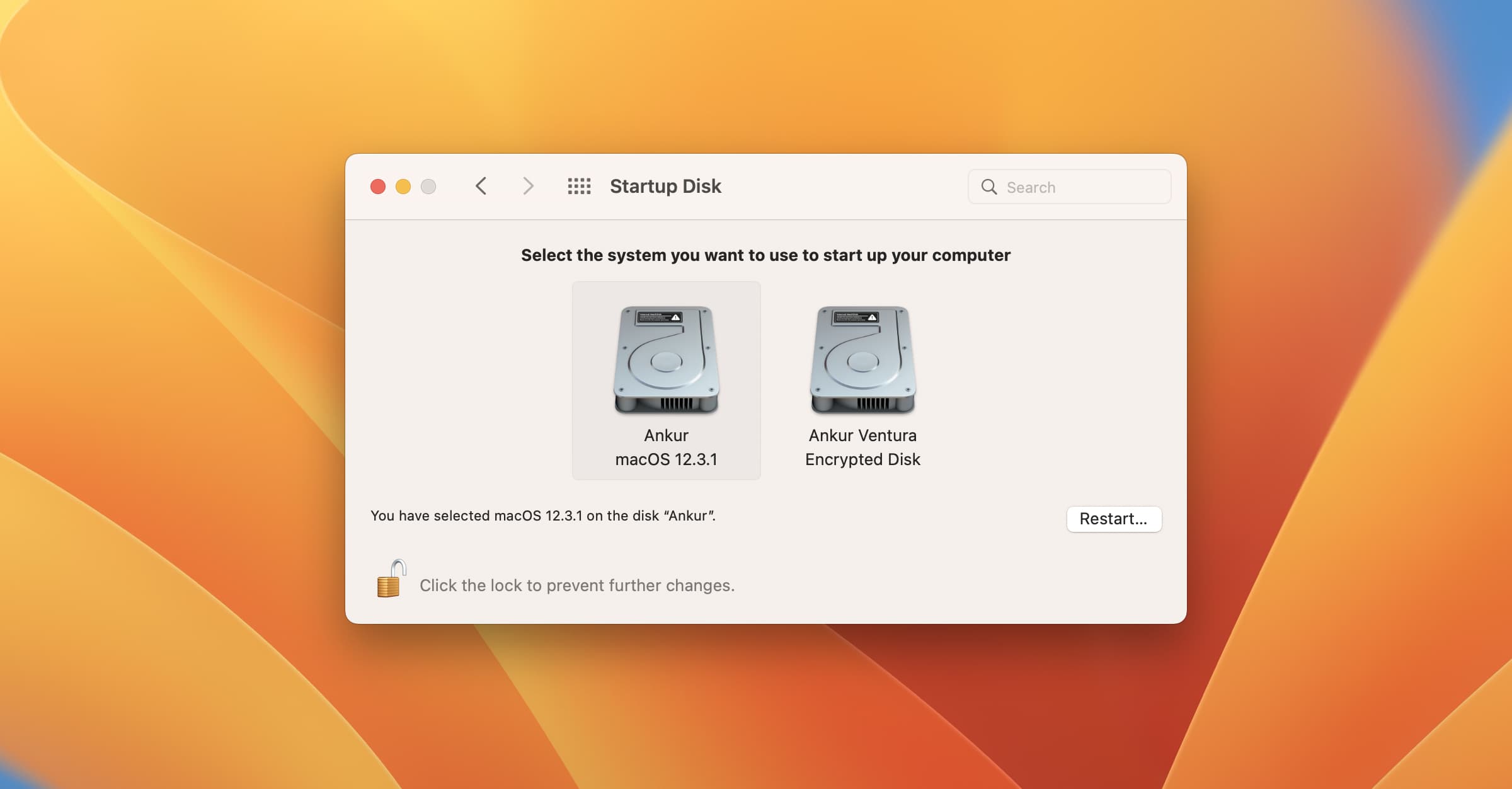
Can’t set a new startup disk?
If you cannot set a new start up disk, there’s no bootable operating system. Formatting or partitioning a disk won’t cut it; Startup Manager and System Settings only show you volumes with a usable operating system. Want to create a multi-boot environment on your Mac? If so, then be sure to follow the steps in the following tutorials explaining deploying macOS on a separate volume or external storage:
- How to install macOS Tahoe 26 on a different partition of your Mac
- How to install macOS Sonoma on a different partition of your Mac
- How to create a bootable USB installer for macOS Sonoma
A note about Startup Security Utility
If your Intel-based Mac is equipped with Apple’s T2 security chip, you won’t be able to change the startup disk or boot into another operating system until changing the default security settings in Startup Security Utility. To enter Startup Security Utility, you must first launch macOS Recovery, which is a built-in recovery system available at boot time.
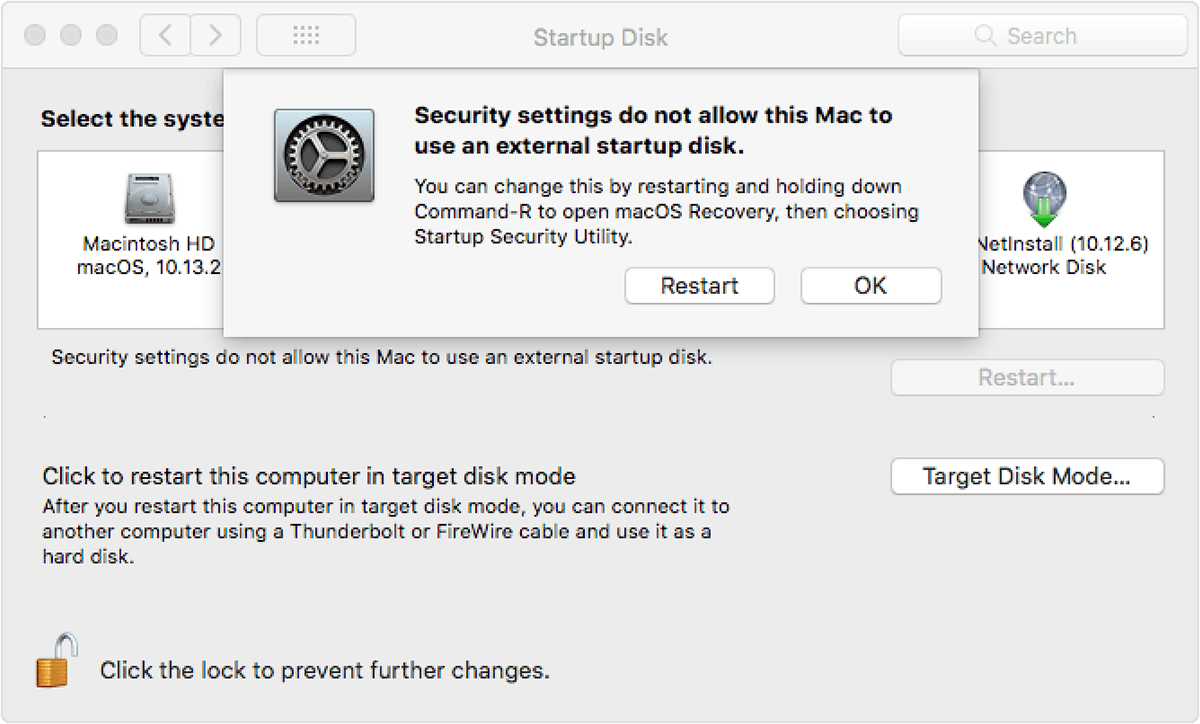
- Turn on your Mac and hold the Command + R keys after the Apple logo appears.
- Select an admin account, click Next, and enter the admin password.
- In the macOS Utilities window, click Utilities > Startup Security Utility.
- When asked to authenticate, click Enter macOS Password then choose an administrator account and enter its password.
- Choose Medium Security in the Security section.
- Click Allow booting from external media in the External Boot section

The “Medium Security” setting lets your Mac run an older macOS version that Apple no longer signs (or Windows) alongside the installed macOS version—useful for software development and troubleshooting. Similarly, allowing booting from external media lets your Mac start up from external storage like a bootable USB thumb drive, a hard drive, or an optical CD/DVD drive.
To prevent booting from any disk but your designated startup disk, set a firmware password in Startup Security Utility and be sure to write it down and keep it in a safe place. Follow these steps below to manage the startup disk security on Apple silicon Macs:
- Shut down your computer.
- Hold the power button until Loading startup options appears.
- Click Options, then click Continue.
- If requested, enter the password for an administrator account.
- In the macOS Recovery window, click Utilities > Startup Security Utility.
- Set your desired security policy.
- If this is an encrypted disk, click Unlock, enter the encryption password, and then hit Unlock.
- Click the Security Policy option and choose Reduced Security.
- Click OK.
- Restart your Mac for the changes to take effect.
The Reduced Security setting is what you need to run older macOS version not signed by Apple. Apple cautions that the Permissive Security setting may pose a security risk if you don’t know what you’re doing because it doesn’t enforce any requirements on the bootable operating system.
Five use cases for Startup Manager
There are many situations that warrant using Startup Manager. Here are some of the more obvious scenarios that average users might encounter:
1. Install an operating system from external media
If you’re old-school Mac owner still rocking an optical drive, you can boot from a CD/DVD disc containing an installer for macOS, Linux, Windows, or other supported operating systems. A bootable operating system can also reside on a FireWire, Thunderbolt, or USB external drive. As long as the disk is bootable, it should show up in Startup Manager.
2. Temporarily override the default startup disk
Startup Manager changes only apply to the current session. To permanently change the startup disk, use System Settings or System Preferences. If you have macOS Sequoia on the startup disk and the macOS Tahome beta on an external drive, use Startup Manager to temporarily override the default startup disk and boot straight into macOS Tahoe instead.
3. Boot into another OS natively
It’s OK to wonder what life’s like on the “other side.” While you can run another operating system alongside macOS using virtualization software such as Parallels Desktop, your Mac can also boot straight into a “foreign” operating system via Startup Manager.
4. Software development and testing
Software developers often use multiple operating systems on the same machine to ensure their apps run without a hiccup on all macOS versions. Bloggers, journalists, and power users typically install macOS betas on another partition. With Startup Manager, you can choose what OS to boot into at startup time.
5. Troubleshoot startup issues
Improper shutdowns, forced restarts, or power interruptions can result in file system errors and even prevent your Mac from starting up. Choosing a different boot device is the first step in troubleshooting startup issues.
Other ways to start up your Mac
Your can start up your Mac in other ways, including:
- Safe Mode: Safe Mode disables certain macOS features, loading only essential components. This can be helpful when troubleshooting software issues. Safe Mode also automatically checks and repairs disk errors, which might fix boot issues.
- Verbose Mode: Verbose Mode is a text-only environment that displays various status messages as your Mac is starting up. Use it to troubleshoot problems related to kernel extensions and custom hardware. Or, you can just enter Verbose Mode to see what’s going on behind the scenes as macOS is loading its components.